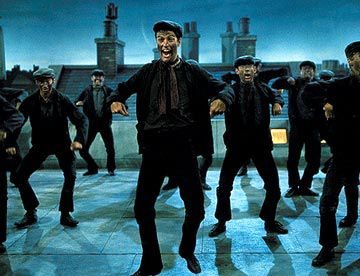Supercalifragilisticexpialidocious … BANG, You’re Dead!
Supercalifragilisticexpialidocious
There it is, the word sung by Julie Andrews and Dick Van Dyke in the movie “Mary Poppins“. Now, say it out loud. Or, if you prefer, say it in reverse – dociousaliexpilisticfragicalirupes.
Either way, it takes us somewhere between one and two seconds for it to roll off our tongues, give or take a tenth of a second, or two. And that’s saying it as fast as you possibly can.
I suppose I could stop here and let you go about the remainder of your day with this ear worm digging its way into your brain:
It’s supercalifragilisticexpialidocious
Even though the sound of it is something quite atrocious
If you say it loud enough, you’ll always sound precocious
Supercalifragilisticexpialidocious
Um diddle, diddle diddle, um diddle ay
Um diddle, diddle diddle, um diddle ay
Um diddle, diddle diddle, um diddle ay
Um diddle, diddle diddle, um diddle ay…
But let’s stick with the time it takes to say that word. For me it’s somewhere between 1.01 seconds and 1.22 seconds, depending upon how quickly I start after clicking the button on the stopwatch.
Now, imagine that you’re a police officer who’s responded to a call where a suspect used a baseball bat to beat his spouse and children. You arrive at the scene and hear yelling, screams, and children crying from inside the home. You knock. No answer. Still more screaming. You force open the door and rush inside where you’re immediately faced with a man pointing a handgun at a badly battered woman. He begins to turn toward you. So how do you respond to the threat?
Well, your body and brain must first of all figure out what’s going on (perception). Then, the brain instructs the body to stand by while it analyzes the scenario (okay, he has a gun and I think I’m about to be shot). Next, while the body is still on hold, the brain begins to formulate a plan (I’ve got to do something, and I’d better do it asap). Finally, the brain pokes the body and tells it to go for what it was trained to do—draw pistol, point the business end of it at the threat, insert finger into trigger guard, squeeze trigger.
To give you an idea as to how long it takes a trained police officer to accomplish those steps, let’s revisit Mary Poppins and Bert the chimney sweep, and that wacky word supercalifragilisticexpialidocious. Remember, it takes us a little over one second to say the entire word.
To put this scenario into perspective, a police officer’s reaction time (based on a study of 46 trained officers), when they already know the threat is there, AND, with their finger already on the trigger, is 0.365 seconds. That’s far less than half the time it takes Bert to sing that famous word. Unfortunately, as fast as that sounds, suspects already know they’re going to fire so they’re typically able to shoot before the officer has a chance to react. Hopefully, their accuracy/marksmanship is less than stellar, which is often the case.
So, when confronted with a potential deadly force situation, officers must perceive/identify the threat, evaluate the situation, develop a plan of action, and then set that plan in motion.
In short, police officers must decide what to do and then do it in the time it takes to say “supercali.” Not even the entire word.
Are you able to make complex decisions in less than a second? How about decisions that involve life or death?
I dare say that many of us can’t decide what to select from a fast food menu within that scant time frame.
Sure, it’s super easy to look back at deadly force incidents and offer opinions as to how they should, or should not have been handled. But only the people who were there at the precise moment the trigger was pulled know the real story. They alone know how they perceived and reacted to the threat to them and/or others.
Justified, or not, it takes less than a second to react, and a lifetime to deal with the decision.





